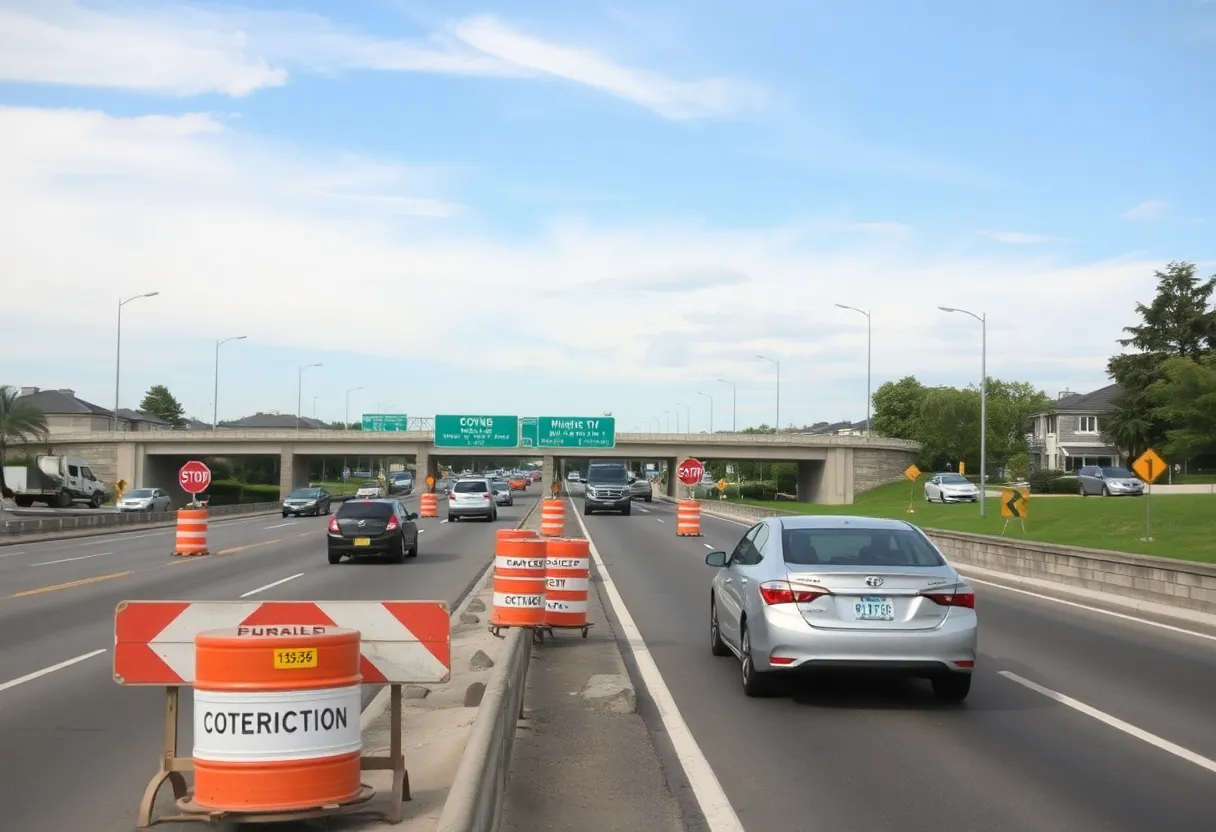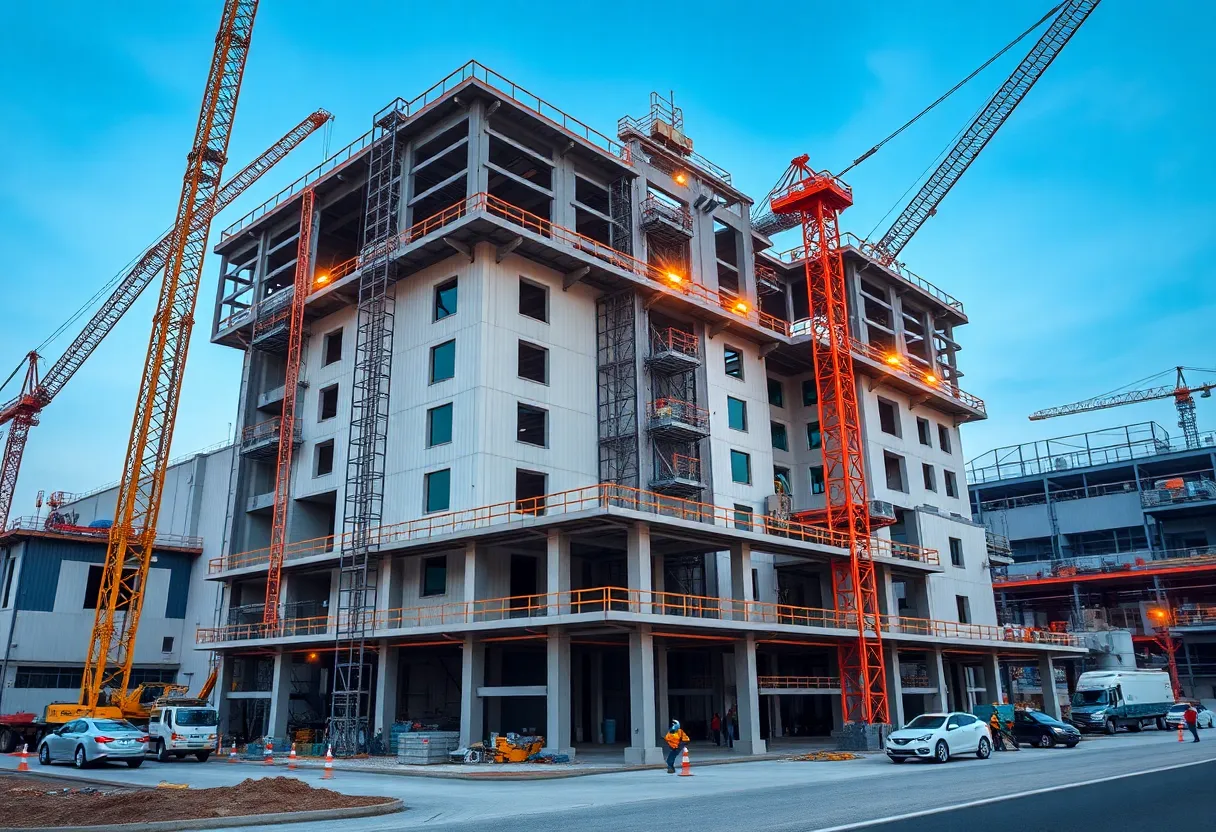North Carolina, October 21, 2025
A proposal to redraw congressional district maps in North Carolina has successfully passed its initial committee stage. The plan aims to adjust the districts, potentially enhancing Republican representation in the state. As lawmakers move forward with this measure, the intent is to finalize the changes ahead of the upcoming elections, prompting discussions on its implications for political balance in North Carolina. The Center Square provides insights into the details and potential consequences of this significant legislative move.
Raleigh, North Carolina
North Carolina’s Republican-controlled legislature has advanced a proposal to redraw the state’s congressional district map, aiming to secure an additional Republican seat in the U.S. House of Representatives.
The state Senate approved the plan along party lines, focusing on two eastern North Carolina districts. The proposed changes are designed to shift the 1st Congressional District, currently represented by Democrat Don Davis, toward a more Republican-leaning configuration. This adjustment involves removing inland counties and incorporating more conservative coastal areas, potentially making the district more favorable for Republican candidates. The plan is expected to pass the House this week.
Critics, including Democrats and civil rights advocates, argue that the redistricting could undermine Black representation and electoral fairness. North Carolina’s 1st District has consistently elected Black representatives since 1992, and the proposed changes could jeopardize that history. The GOP defends the new map as partisan but not racially discriminatory.
This move is part of a broader national redistricting effort, with President Donald Trump urging similar actions in other GOP-led states to maintain Republican control of the U.S. House in the 2026 midterm elections.
Background on North Carolina’s Redistricting Efforts
In 2021, the North Carolina Supreme Court ruled against a congressional map proposed by the state legislature, deeming it a partisan gerrymander. The court drew its own congressional map for the 2022 election cycle. However, after the 2022 elections, Republicans gained a majority on the State Supreme Court and ruled in April 2023 that claims of partisan gerrymandering are non-justiciable. The General Assembly passed a new map placing three incumbent Democrats in Republican-leaning districts.
In September 2025, Senate leader Phil Berger indicated openness to redrawing the state’s congressional lines to match potential gains from California’s Proposition 50. This statement received backlash from Governor Josh Stein, who stated such a redraw would be “ridiculous to do so.”
Implications for the 2026 Midterm Elections
The proposed redistricting aims to give Republicans an additional seat in the 2026 U.S. House of Representatives elections, likely in the 1st Congressional District, making it harder for Representative Don Davis to be re-elected in 2026.
Public Response and Legal Considerations
Public hearings on the redistricting legislation have been contentious, with opponents criticizing the plan as a tool of voter suppression and racial discrimination. Legal challenges claiming racial voter dilution are anticipated, as the redistricting could impact the representation of Black voters in the state.
Next Steps in the Redistricting Process
The proposed redistricting plan has passed the state Senate and is expected to pass the House this week. Due to state law, Democratic Governor Josh Stein cannot veto redistricting maps, although legal challenges are anticipated.
Related Developments in Redistricting
Similar redistricting efforts are underway in other states, with Republicans in North Carolina aiming to add another GOP district to their congressional delegation.
Conclusion
The advancement of North Carolina’s congressional redistricting plan reflects ongoing national debates over electoral fairness and representation. As the process moves forward, it is expected to face further legislative action and potential legal challenges.
FAQ
What is the purpose of North Carolina’s proposed congressional redistricting?
The proposed redistricting aims to secure an additional Republican seat in the U.S. House of Representatives by altering the boundaries of two eastern North Carolina districts, particularly the 1st Congressional District currently represented by Democrat Don Davis.
How does the proposed redistricting affect the 1st Congressional District?
The plan seeks to shift the 1st Congressional District toward a more Republican-leaning configuration by removing inland counties and incorporating more conservative coastal areas, potentially making the district more favorable for Republican candidates.
What are the criticisms of the proposed redistricting?
Critics, including Democrats and civil rights advocates, argue that the redistricting could undermine Black representation and electoral fairness, as the 1st District has consistently elected Black representatives since 1992.
What is the status of the redistricting plan?
The proposed redistricting plan has passed the state Senate along party lines and is expected to pass the House this week. Due to state law, Democratic Governor Josh Stein cannot veto redistricting maps, although legal challenges are anticipated.
How does this redistricting relate to national efforts?
This move is part of a broader national redistricting effort, with President Donald Trump urging similar actions in other GOP-led states to maintain Republican control of the U.S. House in the 2026 midterm elections.
FAQ Schema
{
"@context": "https://schema.org",
"@type": "FAQPage",
"mainEntity": [
{
"@type": "Question",
"name": "What is the purpose of North Carolina's proposed congressional redistricting?",
"acceptedAnswer": {
"@type": "Answer",
"text": "The proposed redistricting aims to secure an additional Republican seat in the U.S. House of Representatives by altering the boundaries of two eastern North Carolina districts, particularly the 1st Congressional District currently represented by Democrat Don Davis."
}
},
{
"@type": "Question",
"name": "How does the proposed redistricting affect the 1st Congressional District?",
"acceptedAnswer": {
"@type": "Answer",
"text": "The plan seeks to shift the 1st Congressional District toward a more Republican-leaning configuration by removing inland counties and incorporating more conservative coastal areas, potentially making the district more favorable for Republican candidates."
}
},
{
"@type": "Question",
"name": "What are the criticisms of the proposed redistricting?",
"acceptedAnswer": {
"@type": "Answer",
"text": "Critics, including Democrats and civil rights advocates, argue that the redistricting could undermine Black representation and electoral fairness, as the 1st District has consistently elected Black representatives since 1992."
}
},
{
"@type": "Question",
"name": "What is the status of the redistricting plan?",
"acceptedAnswer": {
"@type": "Answer",
"text": "The proposed redistricting plan has passed the state Senate along party lines and is expected to pass the House this week. Due to state law, Democratic Governor Josh Stein cannot veto redistricting maps, although legal challenges are anticipated."
}
},
{
"@type": "Question",
"name": "How does this redistricting relate to national efforts?",
"acceptedAnswer": {
"@type": "Answer",
"text": "This move is part of a broader national redistricting effort, with President Donald Trump urging similar actions in other GOP-led states to maintain Republican control of the U.S. House in the 2026 midterm elections."
}
}
]
}
Chart: Key Features of North Carolina’s Proposed Congressional Redistricting
| Feature | Description |
|---|---|
| Objective | Secure an additional Republican seat in the U.S. House of Representatives by redrawing congressional district boundaries. |
| Targeted District | 1st Congressional District, currently represented by Democrat Don Davis. |
| Proposed Changes | Remove inland counties and incorporate more conservative coastal areas to shift the district toward a more Republican-leaning configuration. |
| Criticisms | Potential undermining of Black representation and electoral fairness, as the 1st District has consistently elected Black representatives since 1992. |
| Legislative Status | Passed the state Senate along party lines; expected to pass the House this week. Due to state law, Democratic Governor Josh Stein cannot veto redistricting maps, although legal challenges are anticipated. |
| National Context | Part of a broader national redistricting effort, with President Donald Trump urging similar actions in other GOP-led states to maintain Republican control of the U.S. House. |
Deeper Dive: News & Info About This Topic
HERE Resources
North Carolina Governor Roy Cooper Leads in Senate Race Fundraising
Special Train Service Available for North Carolina State Fair
Investment Authority Shares Updates on Infrastructure Project
Significant Changes Proposed to North Carolina Congressional Map
North Carolina House Establishes Redistricting Panel
North Carolina State Fair Opens with Infrastructure Upgrades
New Congressional Map in North Carolina Could Shift Political Landscape
North Carolina to Debate Congressional Map Redistricting
Author: Construction NC News
The NORTH CAROLINA STAFF WRITER represents the experienced team at constructionncnews.com, your go-to source for actionable local news and information in North Carolina and beyond. Specializing in "news you can use," we cover essential topics like product reviews for personal and business needs, local business directories, politics, real estate trends, neighborhood insights, and state news affecting the area—with deep expertise drawn from years of dedicated reporting and strong community input, including local press releases and business updates. We deliver top reporting on high-value events such as the North Carolina Build Expo, major infrastructure projects, and advancements in construction technology showcases. Our coverage extends to key organizations like the Associated Builders and Contractors of the Carolinas and the North Carolina Home Builders Association, plus leading businesses in construction and legal services that power the local economy such as CMiC Global and Womble Bond Dickinson LLP. As part of the broader network, including constructioncanews.com, constructionnynews.com, and constructiontxnews.com, we provide comprehensive, credible insights into the dynamic construction landscape across multiple states.





